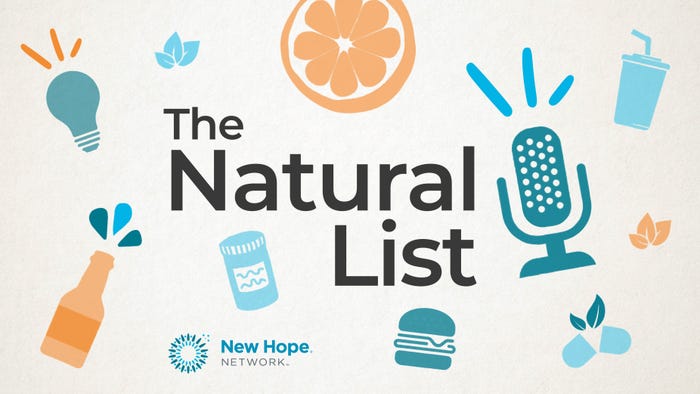New Food Order: What is the role of biotech in an ethical food system?
With experts on every side of the grocery aisle, Episode 16 examines the trajectory of biotech and cell-cultured foods, as well as the pros and cons.
April 11, 2023

Cultivated meat—also called cultured meat, cell-based or lab-grown meat—is a bourgeoning industry. Billions in investment dollars are being spent now, and the McKinsey Institute estimates making cultivated meat will become a $25 billion global industry by 2030.
Regardless of what it is called, biotechnology and cellular agriculture is impacting the food system in ways never seen before. Be it a lab-grown steak, chicken nuggets or shrimp dumplings.
“We're able to harness biology in a way that we have never been before,” says Varun Deshpande, managing director of Good Food Institute India. Within the next couple of decades, Deshpande predicts there will be “more revolution within the food system” than there’s been in the past couple of thousand years.
This will dramatically impact how food is made. There are a lot of ethics and intellectual property rights that need to be considered when it comes to the developments in cellular agriculture, fermentation and biotech foods.
In this episode of New Food Order, a podcast investigating the business of tackling climate and social crises through food and agriculture, Louisa Burwood-Taylor, the head of media research at AgFunder and editor of AgFunder News, and Danielle Gould, the founder of Food+Tech Connect, host a roundtable discussion about the complexities of using biotechnology in engineer foods.
What is 'cell ag' and what to call it?
Cellular agriculture—making food from cell cultures—comes in two different categories. Either the “cell ag” uses microbes that produce proteins or fats, or it originates from “actual animal cells when you’re consuming the cells themselves,” says Isha Datar, executive director of New Harvest, a nonprofit research institute focused on cellular agriculture.
“There's a lot of different terms for meat grown from cells,” Datar says. The problem is, there’s not a good definition for what that exactly means, says Datar, who prefers calling the category “cell-cultured foods” instead of biotech foods, based on the technique that’s being used.
The Good Food Institute, a nonprofit think tank that promotes plant- and cell-based alternatives, divides alternative proteins into three categories: cell-cultured meat; plant-based products (including plant-based meat, eggs and dairy); and products that use fermentation—including precision fermentation, which utilizes microorganisms to extract proteins and ingredients, and biomass fermentation, which grows microbes used in a food product, Deshpande says.
For a while, the industry called everything synthetic biology, says Errol Schweizer, former VP of Grocery for Wholefoods and host of The Check Out podcast. But the nomenclature is being rebranded, which is why terminology such as precision fermentation and cell-cultured meat is now being used, Schweizer says, even though each product use a variety of recombinant, molecular or in-vitro techniques.
Schweizer says that’s further complicated by an industry that already uses terms like “food tech,” “bio” or “GMO,” or the FDA's labeling bioengineered foods as “BE.” “This is a continuation of GMOs and biotechnology,” Schweizer says.
Didier Toubia, the CEO and co-founder of Aleph Farms, a cultivated meat company in Israel, disagrees. “I would argue that biotechnology is not necessarily associated with GMO,” says Toubia. “This is more about using living organisms or living systems to produce products that might be food,” which might include synthetic biology and modifying genes as one of the tools, but “it’s not a necessary step to implement a biotech process.”
Food tech complexity
Both Schweizer and Datar say there’s confusion because there’s a lot of overlap in technologies.
“Primarily, when we’re talking about food tech, we’re talking about GMOs,” Schweizer says, as defined by The Non-GMO Project and European Union. That’s when foreign genetics from another species is introduced into a crop, animal or cell using recombinant or transgenic technologies.
There’s also genetic engineering, such as gene editing with tools like CRISPR, in which certain genes are removed, but no foreign DNA is usually introduced.
“This gets a little confusing because sometimes gene editing tools can also be used for genetic modification and for introducing foreign genetics,” Burwood-Taylor says.
The problem is, Datar says, “Our world is very fixated with naming the end product." Instead, the industry should look at the technology and processes that created the product, she says.
What to ask about cell-based meats
Toubia says it’s important to ask if a product is using GMO technologies or not. Look at the types of organisms that are being used, Schweizer says, and if the DNA is being manipulated.
More importantly, look at factors that aren’t on the label, Schweizer says, including what is in the feedstock and where derivatives are being sourced. The industry needs to look at managing waste from cell-culture meat and dairy—including off-target, non-target metabolites (molecules that break down)—to understand how to dispose of byproducts and metabolic waste that may contain biohazards and toxins.
Schweizer says it’s also important to look at what intellectual property rights are involved and if the technology is open-sourced and available to the public or publicly owned. Or if it privately-held by investors.
Schweizer gives a detailed breakdown in his Forbes piece, “What Questions Should We Be Asking About Cell-Based Meats?”
Need for regulation, open-access research and more transparency
A big problem is a lack of labeling standards for cell-cultured meat and dairy products.
“When the consumers look at the product on the shelf, it's difficult for them to know whether it's better or worse than what they used to purchase or to consume,” Toubia says. “There’s no standardization around the communication and labeling around these products.”
Many of the experts also called for more regulation of the industry. Gould says she’s talked to many CEOs who aren’t thinking of the unintended consequences of using biotechnology.
Deshpande says he doesn’t trust the “enduring goodness of people” to set standards. He says there’s a need for a “robust field” that accounts for industry and government regulators as well as people who are doing open-access academic and scale-up research.
Schweizer agrees. Many companies, big food industry conglomerates and venture capitalists are more interested in extracting value and creating monopolies, he says. Because a lot of companies don’t want another level of scrutiny beyond what currently exists within the food industry, it’s going to take public pressure to get stronger federal regulatory oversight, he says.
Regardless, the technology is here to stay.
It can be used for good or bad, Toubia says. “It's not a matter of whether or not we need these technologies,” Toubia says. “It's a matter of how to manage the technologies to make sure that they promote human progress, and that we avoid some pitfalls and some misuse of the technologies.”
Potential risks, biohazards
Schweizer says there are a lot of risk disclosures that aren’t being discussed enough. He points to Ginko Bioworks Holdings Inc.’s SEC disclosure documents, which describe the company’s work with biological and chemical materials for its biological engineering products and custom microbes that “could be hazardous to human, animal or plant health and safety or the environment.”
The disclosures detail how the company produces hazardous and "biologic waste products" and it “cannot eliminate the risk of accidental or intentional injury, or release or contamination from these wastes or materials.”
The document also states: “The genetically engineered organisms and materials that we develop may have significantly altered characteristics compared to those found in the wild and full effects of deployment or release of our organisms and materials into uncontrolled environments may be unknown.” The risk disclosures indicate there’s a potential for a high-profile biosecurity breach. The company also says it could synthesize DNA sequences or engage in other activity that inadvertently violates biosecurity requirements after its customers receive its engineered cell materials and organisms.
That’s very different than the language being promoted on marketing brochures, on social media and being told to customers, Schweizer says.
“Why are companies required to tell investors this stuff, but not customers?” Schweizer asks. “This stuff ain't sexy. It's a lot of legalese. But shouldn't customers know the same types of risks to a product that's involved in fiduciary responsibility of investors? I believe there needs to be consistency.”
Listen and subscribe to the podcast here.
About the Author
You May Also Like




